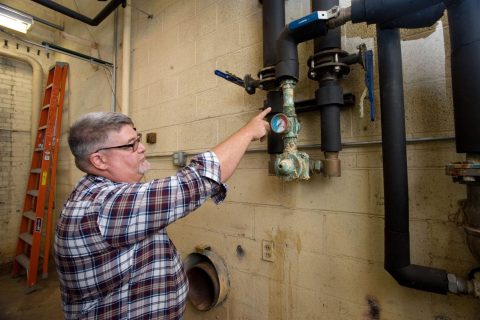There are several criteria for judging the quality of power plant valves: sealing reliability, action response capability, strength, stiffness, and life, etc. Considering power plant valves as the basic unit in the entire thermal equipment system, there are also requirements for fluid-solid coupling vibration and vibration control. . The following are four common problems in power station valve applications.

1. Power plant valve vibration problem:
Variations in valve opening, the poor dynamic performance of the actuator, and valve body leakage are all causes of vibration. Vibration does little damage to the valve itself, but it has a great impact on the entire unit. Low-frequency oscillation. The low-frequency oscillation of the unit is divided into two types: one is the oil film oscillation, which is generated by the oil film supporting the bearing during the speed increase or no-load operation of the unit; the other is the steam oscillation, which is more complicated than the oil film oscillation. Vibration under the action of excitation force often occurs when the unit is loaded. Valve opening changes and leakage are important reasons for steam oscillation.
There are data showing that steam oscillation crashes have occurred in the United States and Germany, and 50mw and 200mw steam turbine crashes have also occurred in my country. Due to the lack of real-time data records at the time, the cause of the failure cannot be determined, but it is suspected to be related to two low-frequency oscillations. related. It can be seen that it is very important to eliminate and reduce the steam oscillation, which depends on the systematic study of the valve opening change and the exciting force generated by the leakage. By reasonably designing the opening and closing stroke of the valve, the probability of steam oscillation can be reduced. Power plant valve control problem: The failure of the control system of the main steam valve and the reheat steam valve is one of the five major accidents of steam turbines, which are mainly manifested in the valve opening and the design, including the failure of the transmission mechanism, the advance and the lag of the stroke, which affect the valve The intensity and vibration. The valve opening control directly affects the working conditions of the steam turbine, so it is highly valued and has become one of the core issues of research.
In recent years, in the study of valve reliability, intelligent valves are the main direction of research. Intelligent valves have the function of self-judging working conditions and real-time self-adjustment. The key component of the intelligent valve is the digital positioner. The digital positioner uses a microprocessor to accurately position the valve’s actuator, monitor, and record the relevant data of the valve.
Power plant valve strength problem: The frequent start-up of the unit has a particularly prominent impact on the strength of the valve and the service life of the valve, especially for steam turbines that use a regulating valve to adjust the speed. The focus of previous research was on the control of the valve. Now it seems that the strength problem is Can’t be ignored either.
All attention should not be focused on control issues, and attention should be paid to strengthen the study of valve strength, life, and sealing because they are the most basic conditions for valve operation.
A. Due to the frequent startup of the unit, the original main steam valve may not meet the new operating requirements.
Because the general main steam valve is designed according to the basic load, its strength is only evaluated according to static pressure, temperature, and creep during the design process, and there is no problem of low cycle fatigue life. Now that the working conditions have changed, the original design may not necessarily meet the requirements. For this reason, it is necessary to consider the low-cycle fatigue life design in the design process, so that the design conditions are consistent with the operating conditions, in order to achieve the purpose of extending the life.
B. Due to the inaccuracy of the actuator stroke control, the valve core generates an impact load on the valve seat. In some power plants, the valve seat was broken and the cracks were washed into the steam turbine, causing the turbine output to drop sharply and the rotor to be seriously damaged.
In addition, for high-pressure valves, there are cavitation phenomena, the original casting defects of the valve body, and the life analysis and prediction of the valve body after cracks are all worthy of further study.

2. Leakage of Solenoid valves:
A. Leakage is not only the cause of vibration, but also external leakage can cause pollution, and internal leakage can also cause energy loss.
Solving the leakage problem can avoid system vibration to a certain extent, and at the same time can extend the life of the equipment and improve efficiency.
B. The life of the high-pressure valve of a supercritical unit is sometimes very short, and the packing must be replaced after the valve of the power station is started several times.
Researching new packing or designing new effective sealing forms is necessary to extend the life of this type of high-pressure valve and improve the reliability of operation.
Due to the special working conditions of Solenoid valves, we should fully solve the above power station valve problems in order to safely use Solenoid valves.

PDF Get-a-Product Catalogue